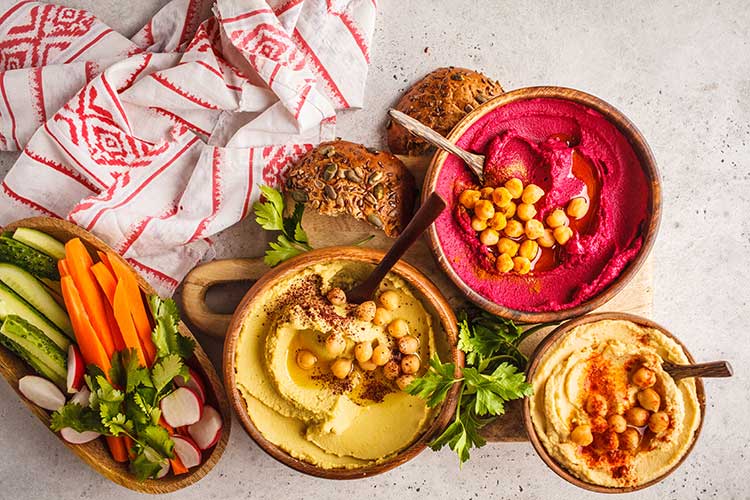Dips and spreads use several types of stabilizers to bind water and emulsify. However, with ingredient supply chain constraints looming and the growing need for more natural ingredients, manufacturers are seeking alternatives. One natural solution, Citri-Fi® citrus fiber, not only provides the dual functionality, but also, cleans up label declarations in a variety of foods like salsa, hummus and cheese dips.
Hosting a party is not complete without a smorgasbord of dips and spreads to go with your chips and crackers. Dips range from dairy-based like sour cream to bean-based like hummus. Over the past few years, this category experienced a surge of innovation. For instance, the clean label movement spurred many foods to contain more natural ingredients with shorter listings. The plant-based trend drove new innovation in dairy-free or dairy alternative options. And to minimize consumer fatigue, new flavors and seasoning options emerged including bold ethnic flavor profiles.
Challenges in Dips and Spreads Formulations
Despite the popularity of dips and spreads, they do face their own set of challenges behind the scenes. For example, some of these dip ingredients are encountering availability issues. Typical shortages affecting dip formulations include workhorse food ingredients like starches and food gums. However, replacing these stabilizers pose a challenge since many functional ingredients have their limitations. Because of this, product developers explore a systems approach to replace one ingredient.
Another challenging area involves dairy-free or dairy alternative dip formulations. For instance, dairy proteins in conventional dips bind water and emulsify. In dairy-based dips, the water releases over time causing syneresis. As a result, stabilizers such as starches and food gums are typically incorporated. However, some of these ingredients risk food labeling issues – not consumer friendly.
Dipping into the Citrus Fiber Solution
Another option is to use alternative functional ingredients like citrus fiber. However, not all citrus fibers are created the same. Today, the market offers several citrus fibers which differentiate themselves by their raw material, composition and their processing. Some citrus fibers provide limited functionality due to low pectin content making them more fit as a fortifying dietary fiber. Other citrus fibers stem from byproduct of the pectin extraction process. Because of this, they are exposed to solvents and potentially other agents to make the finished product.
Alternatively, Citri-Fi citrus fiber is produced from byproduct of the citrus juicing process using a process free from chemical modifications. This natural process preserves the citrus fiber’s composition how nature intended. Citri-Fi contributes over 70% dietary fiber with almost half containing soluble fiber in the form of native intact pectin. The natural composition and process opens up the fiber to provide high water holding and emulsification properties. This dual functionality creates high quality natural dips and spreads.
Citrus Fiber Usage Guidelines Spread
Citri-Fi 100 product line’s low usage level, less than 1%, binds the water and provides emulsification properties if oil or fat are present. Typically, this natural ingredient is added to dry ingredients before the liquid phase. This helps with uniform dispersion. If high shear is available, product developers can add the Citri-Fi to water under agitation. Lastly, this citrus fiber can be mixed into oil first before mixing with water to create an emulsion.
For example, Citri-Fi can be used between 0.3% and 0.7% in dairy-free dips containing plant-based protein bases to bind up loose water. This minimizes syneresis over shelf-life. Another potential dip application entails product developers trying to extend dip ingredients for cost savings. For instance, in hummus dips, garbanzo bean (chickpea) bases or tahini can be extended using Citri-Fi citrus fiber to help reduce costs. Typically, garbanzo beans bind water and emulsify naturally. However, these functionalities lessen with reduced levels.
Citrus Fiber: Clean Label and Available
Citri-Fi’s labeling options include citrus fiber, dried citrus pulp or citrus flour which all resonate well in the natural markets. This upcycled ingredient is also non-GMO project certified, allergen-free and gluten-free. And because Citri-Fi has no e-number, regions like Europe benefit from using it in E-free food and beverages. In addition, Fiberstar just recently launched the USDA certified organic version – Citri-Fi 400 series. This new organic product line provides similar functional benefits – water holding and emulsification properties – to the flagship 100 series.
For more information, please contact us.



